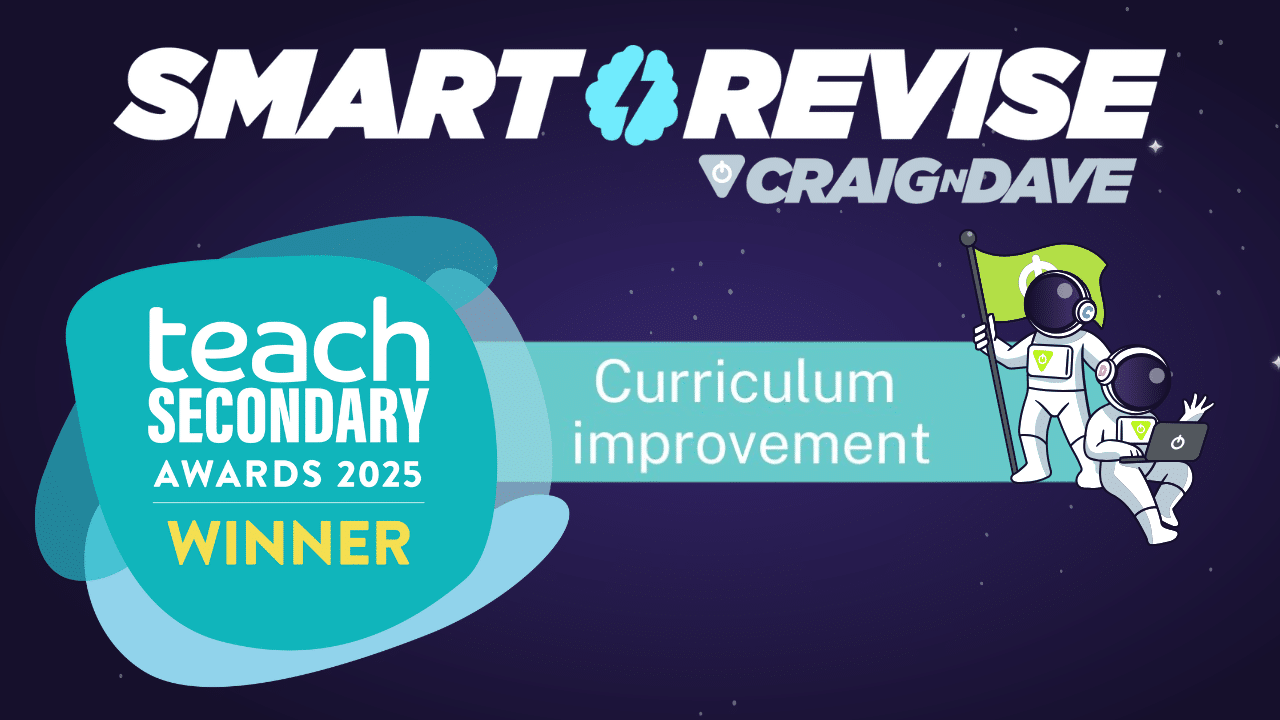
1 November 2025
High expectations are often spoken about in education but rarely unpacked in a way that feels practical and actionable. We all think we have high expectations, but what do they actually look like in the classroom—and how do they extend beyond it, especially into the realm of homework?
This blog explores what we mean by high expectations and how the approach of Craig’n’Dave offers a compelling, practical model for embedding them into everyday teaching practice.
What do we mean by high expectations?
High expectations are not just about aiming for top grades or enforcing strict rules. They are about believing in every student’s potential and creating the conditions for them to meet that potential. High expectations were not always immediately visible in every classroom, but they should be there through clear routines and a belief in effort. High does not mean hard. These expectations are not ideals; they are daily habits.
Homework as a reflection of high expectations
Homework is often a battleground. Too often, it’s set because policy demands it, not because it supports learning. Craig’n’Dave challenge this status quo with a research-informed, student-centred approach that exemplifies high expectations in action.
Our philosophy is simple: homework should be meaningful and accessible to all. It should not widen the attainment gap by relying on parental support or assuming every student has a quiet place to study. Instead, it should:
- Be short and focused.
- Require no parental help.
- Be the same for all students.
- Prepare students for upcoming lessons.
- Support memory retention.
- Be something students are happy to do.
This is not about lowering the bar—it’s about raising it in a way that is fair, inclusive, and effective.
The flipped classroom: high expectations in practice
Craig’n’Dave’s flipped learning model is a powerful example of high expectations done right. Students are asked to watch a 4–12-minute video before the lesson and take notes using the Cornell method. This prepares them for class discussions and activities and builds habits of independence and accountability.
What makes this approach high expectation?
- It assumes students can and will prepare—and holds them to it.
- It builds habits—students quickly learn that preparation matters.
- It respects students’ time and capacity—short, focused tasks are more effective than long, open-ended ones.
- It shifts the teacher’s role—from content deliverer to learning facilitator, able to target support where it’s most needed.
Even when students don’t complete the homework, the system is designed to adapt without derailing the lesson. That’s high expectations with flexibility—not punishment.
When the flipped classroom fails
Of course, the flipped classroom isn’t immune to challenges. One of the most common pitfalls is when students don’t do the homework—and teachers begin to expect that they won’t. This creates a downward spiral of diminishing expectations. Teachers stop setting the work, or stop holding students accountable for it, and the culture of high expectations quietly erodes.
But this is precisely the moment when high expectations matter most. The work is deliberately short, accessible, and achievable. It’s not that students can’t do it—it’s that they need to believe it matters, and that their teachers believe they will do it. “They can because they think they can” can also be expressed to teachers as, “they will because we think they will.”
Holding the line—consistently, calmly, and with belief—is what builds the habits that make flipped learning work. It’s not about punishment or pressure. It’s about trust, structure, and persistence.
Smart Revise and the power of weekly goals
Smart Revise, a platform designed to support retrieval practice, spaced learning, and long-term memory retention also supports high expectations. The new goals feature automatically sets personalised weekly targets for each student—covering quizzes, key terms, and advanced questions. These goals start small and scale up as the course progresses, reinforcing the idea that progress is expected, achievable, and measurable.
Importantly, Smart Revise doesn’t punish students who fall behind—it supports them. Its regular use builds a rhythm of learning that reflects high expectations: every student, every week, making progress. It’s a quiet but powerful way to say, “We believe you can do this—and we’re going to help you get there.”
Culture, not compliance
High expectations are not about perfection or pressure. They are about belief, structure, and consistency. They are about creating a culture where students know what is expected, why it matters, and how to meet those expectations.
Craig’n’Dave’s approach to homework shows us that high expectations don’t have to be loud or punitive. They can be quiet, consistent, and deeply effective. When students know that preparation is expected that their effort matters, and that support is there when needed—they rise to meet the challenge.











